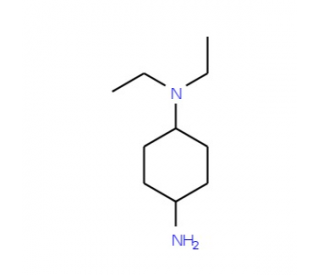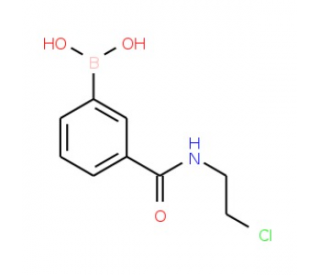详细说明
Species Reactivity
Human
Specificity
Detects human CX3CL1/Fractalkine in ELISAs. In sandwich immunoassays, less than 10% cross-reactivity with recombinant mouse CXCL6 and less than 0.2% cross-reactivity with recombinant human (rh) CXCL6, rhCXCL9, and recombinant rat CX3CL1 is observed.
Source
Monoclonal Mouse IgG 1 Clone # 81506
Purification
Protein A or G purified from hybridoma culture supernatant
Immunogen
NS0-derived and E. coli-derived Recombinant Human CX3CL1/Fracktalkine
Gln25-Arg339
Accession # P78423Formulation
Lyophilized from a 0.2 μm filtered solution in PBS with Trehalose. *Small pack size (SP) is supplied as a 0.2 µm filtered solution in PBS.
Endotoxin Level
<0.10 EU per 1 μg of the antibody by the LAL method.
Label
Unconjugated
Applications
Recommended
ConcentrationSample
CyTOF-ready
Ready to be labeled using established conjugation methods. No BSA or other carrier proteins that could interfere with conjugation.
Intracellular Staining by Flow Cytometry
2.5 µg/10 6 cells
Human CX3CL1/Fractalkine transfected NS0 cells fixed with paraformaldehyde and permeabilized with saponin
Human CX3CL1/Fractalkine Sandwich Immunoassay
Reagent
ELISA Capture (Matched Antibody Pair)
2-8 µg/mL
Human CX3CL1/Fractalkine Chemokine Domain Antibody (Catalog # )
ELISA Detection (Matched Antibody Pair)
0.5-2.0 µg/mL
Human CX3CL1/Fractalkine Chemokine Domain Biotinylated Antibody (Catalog # )
ELISA Standard
Recombinant Human CX3CL1/Fractalkine (Full Length) Protein (Catalog # )
Neutralization
Measured by its ability to neutralize CX3CL1/Fractalkine-induced chemotaxis in the BaF3 mouse pro‑B cell line transfected with mouse CX3CR1. The Neutralization Dose (ND 50) is typically 1-5 µg/mL in the presence of 100 ng/mL Recombinant Human CX3CL1/Fractalkine.
Please Note: Optimal dilutions should be determined by each laboratory for each application. are available in the Technical Information section on our website.
Data Examples
Neutralization | Chemotaxis Induced by CX3CL1/Fractalkine and Neutralization by Human CX3CL1/Fractalkine Antibody. Recombinant Human CX3CL1/Fractalkine (Catalog # ) chemoattracts the BaF3 mouse pro‑B cell line transfected with mouse CX3CR1 in a dose-dependent manner (orange line). The amount of cells that migrated through to the lower chemotaxis chamber was measured by Resazurin (Catalog # ). Chemotaxis elicited by Recombinant Human CX3CL1/Fractalkine (100 ng/mL) is neutralized (green line) by increasing concentrations of Mouse Anti-Human CX3CL1/Fractalkine Chemokine Domain Monoclonal Antibody (Catalog # MAB3652). The ND50 is typically 1-5 µg/mL. |
Preparation and Storage
Reconstitution
Reconstitute at 0.5 mg/mL in sterile PBS.
Shipping
The product is shipped at ambient temperature. Upon receipt, store it immediately at the temperature recommended below. *Small pack size (SP) is shipped with polar packs. Upon receipt, store it immediately at -20 to -70 °C
Stability & Storage
Use a manual defrost freezer and avoid repeated freeze-thaw cycles.
12 months from date of receipt, -20 to -70 °C as supplied.
1 month, 2 to 8 °C under sterile conditions after reconstitution.
6 months, -20 to -70 °C under sterile conditions after reconstitution.
Background: CX3CL1/Fractalkine
CX3CL1, also known as Fractalkine, is a type I membrane protein in which a chemokine domain possessing a unique C-X3-C cysteine motif is tethered on a long mucin-like stalk. It can also be released as a soluble molecule upon proteolysis at a membrane proximal site.
Entrez Gene IDs:
6376 (Human); 20312 (Mouse); 89808 (Rat)
Alternate Names:
ABCD-3; C3Xkine; chemokine (C-X3-C motif) ligand 1; CX3C membrane-anchored chemokine; CX3CL1; CXC3; CXC3C; FKN; Fractalkine; Neurotactin; neurotactin); NTNsmall inducible cytokine subfamily D (Cys-X3-Cys), member 1 (fractalkine; NTTSmall-inducible cytokine D1; SCYD1C-X3-C motif chemokine 1; small inducible cytokine subfamily D (Cys-X3-Cys), member-1










 粤公网安备44196802000105号
粤公网安备44196802000105号